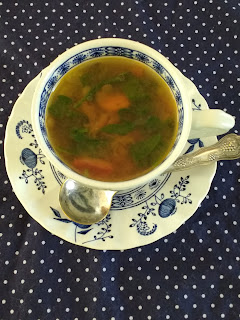What is it and how do you cook it?
What is this and how do you cook it? Since I wanted to pick up a few things at the local Indian grocery this week, I decided to go on produce day. Those visits usually end with me holding something green asking, "what is this, and how do you cook it?" Some kind person in the store always tells me. Today's mystery food is this: It's green! According to the internet, there is another edible variety of this plant that has red in its leaves as well. Any guesses yet? When I got it, I was basically looking at stems because the leafy part was inside of a plastic bag. Even if I saw the whole thing, I still wouldn't know what it was. As it turns out, more people are familiar with eating the seeds of this plant than the leaves. It's amaranth. At least it was a plant I had heard of before. It came with the instructions to cook it like spinach. That's not too hard. While I did pick the seeds off separately, I did wash them and toss
